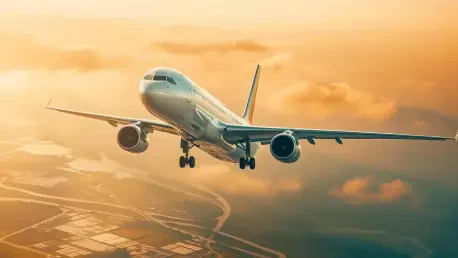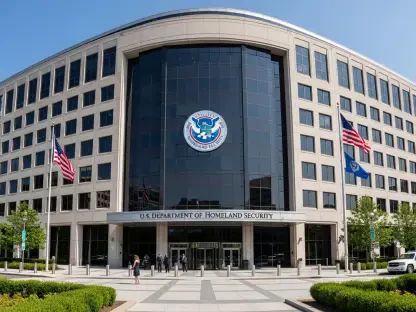As the US government shutdown drags on, its ripple effects are being felt across the aviation industry, disrupting both commercial and private flights. Today, we’re joined by Donald Gainsborough, a political savant and leader at Government Curated, whose deep expertise in policy and legislation offers a unique perspective on how this crisis is unfolding. In our conversation, we explore the challenges airlines face with mandated flight cuts, the strain on airport staff and safety protocols, the murky guidance surrounding private jets, and the surprising resilience of airline stocks amidst the chaos.
How are major airlines managing the flight reductions mandated by the FAA during this government shutdown?
Major airlines like Delta, American, Southwest, and United are in a tough spot. They’ve had to scale back operations significantly, with cuts starting at 4 percent and now potentially reaching up to 20 percent if the shutdown persists. They’re reshuffling schedules, consolidating flights, and trying to minimize disruptions, but it’s a logistical nightmare. Their focus is on maintaining service at key hubs while communicating delays and cancellations to passengers as early as possible. It’s a balancing act between operational capacity and customer frustration.
What are the biggest hurdles airlines face with the FAA’s directive to cut flights by such a large margin?
The core issue is unpredictability. Airlines plan routes and schedules months in advance, and a sudden directive to cut flights by up to 20 percent throws everything into disarray. They’re grappling with reassigning aircraft and crew, managing overbooked flights, and dealing with revenue losses from reduced capacity. On top of that, the lack of clear timelines from the government makes it hard to strategize—will this be a short-term hit, or are we looking at weeks of reduced operations? It’s a cascading effect on their entire business model.
How are passengers experiencing the impact of these delays and cancellations at major airports?
Passengers are bearing the brunt of this crisis. At the 40 busiest airports, like Atlanta and Denver, ground delays are often exceeding an hour due to staffing shortages. We’re seeing hundreds of cancellations daily and thousands of delayed flights. For the average traveler, this means missed connections, disrupted plans, and a lot of frustration. Imagine trying to get to a critical meeting or a family emergency and being stuck in a terminal with no clear answers—that’s the reality for many right now.
Can you paint a picture of the current situation with air traffic controllers and TSA officers during the shutdown?
It’s a dire situation. Thousands of air traffic controllers and TSA officers are working without pay, which is both a morale killer and a practical problem. On any given day, 20 to 40 percent of controllers aren’t showing up, either due to financial strain or protest. TSA officers are in a similar boat, with over 50,000 affected. These are essential workers ensuring safety and security, and their absence or reduced capacity directly translates to longer lines, delayed flights, and heightened risks. It’s a human toll that’s hard to overstate.
With such significant staffing shortages, how is flight safety being maintained?
The FAA is prioritizing safety over volume, which is why they’ve mandated these flight reductions. They’re redistributing controllers to cover critical areas and using technology to monitor airspace more efficiently, but it’s a Band-Aid on a much larger wound. With fewer eyes on the ground and in the tower, there’s an increased reliance on automated systems and stricter spacing between flights to avoid errors. It’s a tense environment, and while safety hasn’t been compromised yet, the strain is palpable.
Why do you think there’s so little clarity from the FAA or DOT on how these flight cuts apply to private jets and charter flights?
Frankly, private aviation often falls into a gray area in policy discussions. The FAA and DOT are focused on commercial operations because they impact the largest number of people, and general aviation—like private jets—tends to be an afterthought. There’s also a political angle; private jet owners and charter operators have lobbying power, and regulators might be hesitant to impose strict cuts without ironclad justification. The vague guidance on reductions at high-impact airports for general aviation reflects this hesitation and lack of prioritization.
How are private jet owners and charter operators responding to the shutdown compared to commercial airlines?
Unlike commercial airlines, many private jet owners and charter operators aren’t facing the same level of mandatory reductions yet. Some, like JSX, have acknowledged complying with FAA orders, but the impact seems less severe. They’re continuing operations where possible, often flying out of smaller airports less affected by cuts. However, there’s growing scrutiny from the public and advocacy groups who argue that private flights are taking up valuable airspace while commercial travelers suffer. It’s a stark contrast in terms of pressure and public perception.
What’s your perspective on advocacy groups urging private jet owners to halt flights during this crisis?
I think groups like Patriotic Millionaires have a valid point when they highlight the disparity in impact. Private jets account for a significant chunk of flights—one in six in US airspace—but contribute just 2 percent to the trust fund that maintains it. When everyday travelers are stuck due to limited capacity, seeing private jets take off for non-essential trips feels like a slap in the face. Their call for voluntary grounding is more about ethics than policy, but it raises important questions about fairness in a strained system.
Looking at the financial side, why have airline stocks remained strong despite the operational challenges of the shutdown?
It’s counterintuitive, but markets are often forward-looking. Investors seem to believe the shutdown is a temporary blip and that airlines like Delta, United, and Southwest have the resilience to weather it. Strong quarterly earnings prior to the shutdown, coupled with high demand for travel, are buoying confidence. There’s also a sense that once the government resolves this, pent-up demand will drive a quick recovery. Stocks are reflecting optimism about the long game, not the current turbulence.
What’s your forecast for the aviation industry if the government shutdown continues for several more weeks?
If this drags on, we’re looking at a deepening crisis. Flight cuts could exceed 20 percent, further crippling commercial travel and potentially grounding more routes. Staffing shortages will worsen, increasing safety risks and passenger frustration. Financially, airlines might start feeling the pinch with sustained revenue losses, and smaller carriers could be hit hardest. On the policy front, I expect louder calls for prioritizing commercial over private flights, and possibly emergency legislation to address staffing. It’s a precarious path, and the longer this lasts, the harder the recovery will be.









